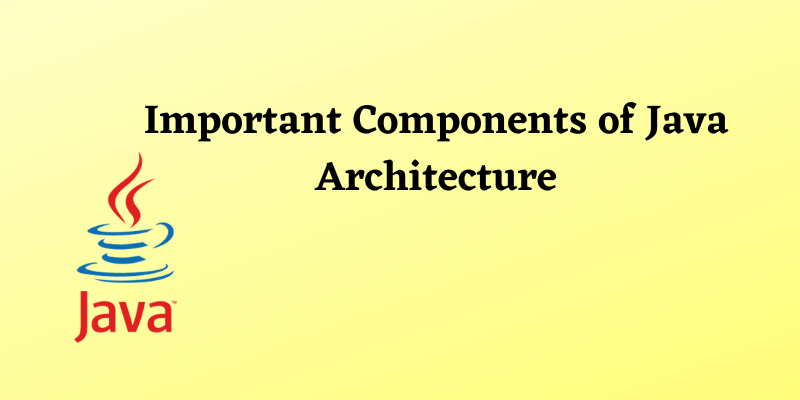Important Components of Java Architecture
Java is the best object-oriented programming language that powers billions of devices, such as notebook computers, mobile devices, gaming consoles, medical equipment, etc. Java’s principles and grammar which is usually based on the C and C++ programming languages. If you want to learn more about Important Components of Java Architecture Join, JAVA Training in Chennai at FITA Academy, where you will learn Java with excellent placement and course certification.
Components of Java Architecture:
- Java Virtual Machine (JVM)
- Java Runtime Environment (JRE)
- Java Development Kit (JDK)
Java Virtual Machine:
WORA is the most crucial element of Java. WORA is an acronym that stands for Write Once, Run Anywhere. We can develop our code once and utilise it anywhere or on any operating system according to the functionality. Because of the Java Virtual Machine, our Java programme can execute on any platform. It is a Java platform component that provides us with an environment to run Java programmes. The primary function of the JVM is to translate bytecode into machine code.
The JVM initially loads the code into memory and verifies it. The code is then executed, and a runtime environment is provided. The architecture of the Java Virtual Machine (JVM) is as follows:
JVM Architecture:
The Java Virtual Machine (JVM) is an abstract machine that provides the environment in which Java bytecode is executed.
Classloader:
ClassLoader is a subsystem that is responsible for loading class files. When we execute it, ClassLoader loads the Java code first.
Class Method Area:
During the execution of the code, the class data is saved in memory in a specific location. The static variables, static methods, static blocks, and instance methods are all stored in the class method area.
Heap:
The heap area is produced when the JVM starts up and is part of the JVM memory. Its size cannot be static because it changes while the application runs.
Stack:
It is also known as a thread stack. It is designed for a single thread of execution. The thread uses this area to store items such as the partial result, local variable, data used for method calls and returns, and so on.
Execution Engine:
It is at the heart of the JVM. Its primary function is to execute bytecode and Java classes. The execution engine consists of three significant components utilized to execute Java classes.
Enroll Java Online Course, where you will learn the basics of advanced Java at your flexible time.
Interpreter:
It executes by converting the byte code to native code. It runs the code in a consecutive order. The interpreter constantly interprets, despite using the same procedure several times. This reduces system performance, and the JIT compiler is introduced to address this.
JIT Compiler:
The JIT compiler is introduced to address the interpreter’s shortcomings. It accelerates execution and enhances performance.
Garbage Collector:
The garbage collector, a Java programme, is used to manage memory. It operates in two stages, namely, Mark and Sweep. Mark is where the garbage collector recognises used and unused memory portions. The Sweep takes the detected object out of the Mark.
JVM Runtime Environment:
It provides a platform for the execution of Java programmes. JRE loads our Java code, integrates it with the necessary libraries, and launches the JVM to run it.
Java Development Kit:
It is a software development environment for creating Java apps and applets. JRE, a compiler, an interpreter or loader, and other development tools are all included in the Java Development Kit.
Conclusion:
In this blog, you will gather more detailed information about Java and the components of Java architecture. Join a Java Course in Bangalore, where you will train under expert trainers with real-time examples and case studies.

